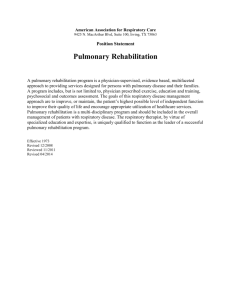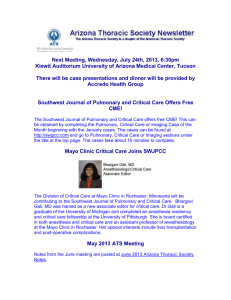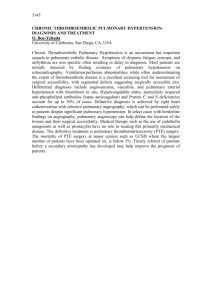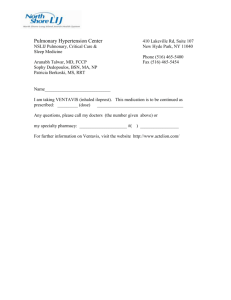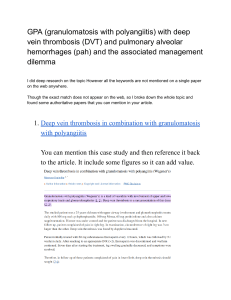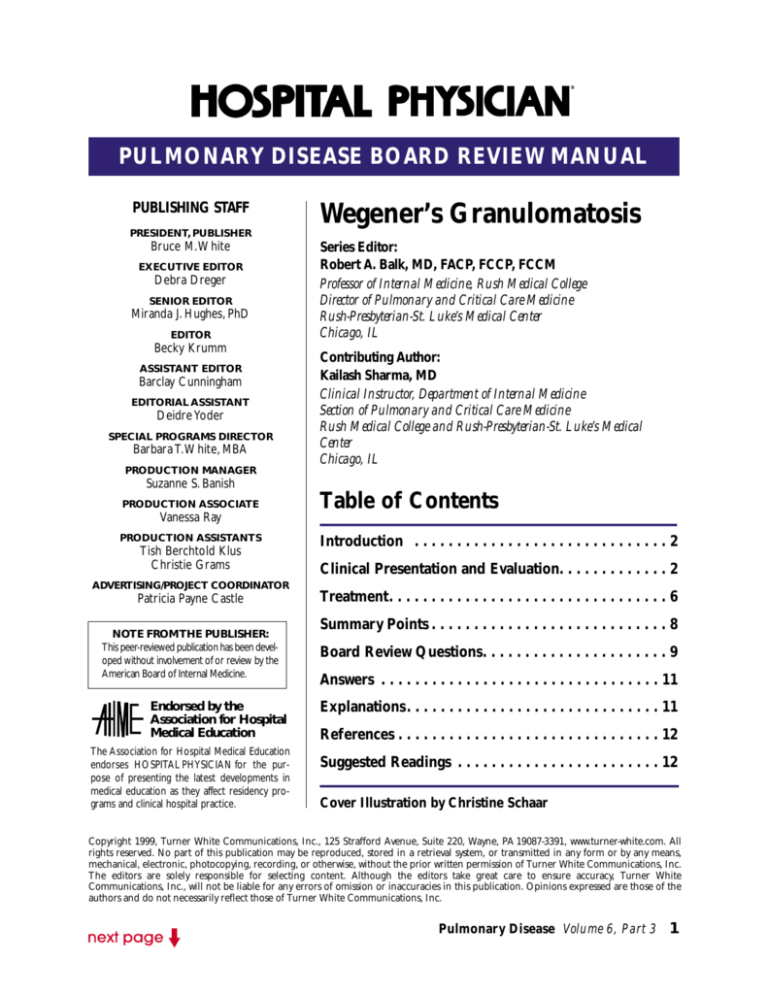
®
PULMONARY DISEASE BOARD REVIEW MANUAL
PUBLISHING STAFF
PRESIDENT, PUBLISHER
Bruce M.White
EXECUTIVE EDITOR
Debra Dreger
SENIOR EDITOR
Miranda J. Hughes, PhD
EDITOR
Becky Krumm
ASSISTANT EDITOR
Barclay Cunningham
EDITORIAL ASSISTANT
Deidre Yoder
SPECIAL PROGRAMS DIRECTOR
Barbara T.White, MBA
PRODUCTION MANAGER
Wegener’s Granulomatosis
Series Editor:
Robert A. Balk, MD, FACP, FCCP, FCCM
Professor of Internal Medicine, Rush Medical College
Director of Pulmonary and Critical Care Medicine
Rush-Presbyterian-St. Luke’s Medical Center
Chicago, IL
Contributing Author:
Kailash Sharma, MD
Clinical Instructor, Department of Internal Medicine
Section of Pulmonary and Critical Care Medicine
Rush Medical College and Rush-Presbyterian-St. Luke’s Medical
Center
Chicago, IL
Suzanne S. Banish
PRODUCTION ASSOCIATE
Vanessa Ray
PRODUCTION ASSISTANTS
Tish Berchtold Klus
Christie Grams
ADVERTISING/PROJECT COORDINATOR
Patricia Payne Castle
NOTE FROM THE PUBLISHER:
This peer-reviewed publication has been developed without involvement of or review by the
American Board of Internal Medicine.
Endorsed by the
Association for Hospital
Medical Education
The Association for Hospital Medical Education
endorses HOSPITAL PHYSICIAN for the purpose of presenting the latest developments in
medical education as they affect residency programs and clinical hospital practice.
Table of Contents
Introduction . . . . . . . . . . . . . . . . . . . . . . . . . . . . . . 2
Clinical Presentation and Evaluation. . . . . . . . . . . . . 2
Treatment. . . . . . . . . . . . . . . . . . . . . . . . . . . . . . . . . 6
Summary Points . . . . . . . . . . . . . . . . . . . . . . . . . . . . 8
Board Review Questions. . . . . . . . . . . . . . . . . . . . . . 9
Answers . . . . . . . . . . . . . . . . . . . . . . . . . . . . . . . . . 11
Explanations. . . . . . . . . . . . . . . . . . . . . . . . . . . . . . 11
References . . . . . . . . . . . . . . . . . . . . . . . . . . . . . . . 12
Suggested Readings . . . . . . . . . . . . . . . . . . . . . . . . 12
Cover Illustration by Christine Schaar
Copyright 1999, Turner White Communications, Inc., 125 Strafford Avenue, Suite 220, Wayne, PA 19087-3391, www.turner-white.com. All
rights reserved. No part of this publication may be reproduced, stored in a retrieval system, or transmitted in any form or by any means,
mechanical, electronic, photocopying, recording, or otherwise, without the prior written permission of Turner White Communications, Inc.
The editors are solely responsible for selecting content. Although the editors take great care to ensure accuracy, Turner White
Communications, Inc., will not be liable for any errors of omission or inaccuracies in this publication. Opinions expressed are those of the
authors and do not necessarily reflect those of Turner White Communications, Inc.
Pulmonary Disease Volume 6, Part 3 1
®
PULMONARY DISEASE BOARD REVIEW MANUAL
Wegener’s Granulomatosis
Series Editor:
Robert A. Balk, MD, FACP, FCCP, FCCM
Contributing Author:
Kailash Sharma, MD
Professor of Internal Medicine
Rush Medical College
Director of Pulmonary and Critical Care Medicine
Rush-Presbyterian-St. Luke’s Medical Center
Chicago, IL
Clinical Instructor
Department of Internal Medicine
Section of Pulmonary and Critical Care Medicine
Rush Medical College and
Rush-Presbyterian-St. Luke’s Medical Center
Chicago, IL
I. INTRODUCTION
Wegener’s granulomatosis (WG) is a serious idiopathic systemic necrotizing granulomatous vasculitis
characterized by inflammation of the upper and lower
respiratory tracts and often associated with glomerulonephritis. The other idiopathic vasculitides affecting
lungs are Churg-Strauss syndrome and necrotizing sarcoid granulomatosis. Secondary pulmonary vasculitides,
such as bronchocentric granulomatosis (bronchial and
bronchiolar granulomatous inflammation related to
allergic bronchopulmonary aspergillosis), lymphomatoid granulomatosis (angiocentric lymphoproliferative
disorder), and diffuse pulmonary hemorrhage are included in a broader differential diagnosis.
EPIDEMIOLOGY
The estimated annual incidence of WG is 8.5 cases
per million population. Its incidence peaks in the
fourth to fifth decades of life, but it has also been found
in children as young as 3 months. Men are slightly more
commonly affected than women. It has been reported
in all races, but individuals of northern European
descent have a higher incidence. Seasonal peak has
been seen in the winters. A gradual increase in the incidence may be the result of improved diagnostic techniques and increased awareness of the disease.
2 Hospital Physician Board Review Manual
PATHOGENESIS
The etiology of WG has not been determined.
However, hypersensitivity reactions to infection with
Staphylococcus aureus and parvovirus B-19 have been postulated to stimulate production of cytokines. Antineutrophil
cytoplasmic antibodies (ANCAs) activate cytokine-primed
neutrophils expressing proteinase 3 (PR3) and myeloperoxidase (MPO) on their cell membrane. This induces an
oxygen radical burst, contributing to endothelial and tissue damage. In animal models, the presence of ANCAs
has been indirectly linked with the pathogenesis of WG.
II. CLINICAL PRESENTATION AND EVALUATION
CASE 1 PRESENTATION
Patient 1 is a 54-year-old white woman who is admitted to the hospital with a 4-week history of progressive
dyspnea on exertion, recurrent bouts of hemoptysis,
right pleuritic chest pains, and a low-grade fever. She
has had a left temporal headache for 1 week with blurring of vision and a red, painful right eye. Other symptoms include generalized body aches, painful mouth
ulcers, and tiredness. She is anorexic and has lost 12 lb.
She has a 45–pack-year history of smoking but does
not use alcohol or recreational drugs. Six years ago she


